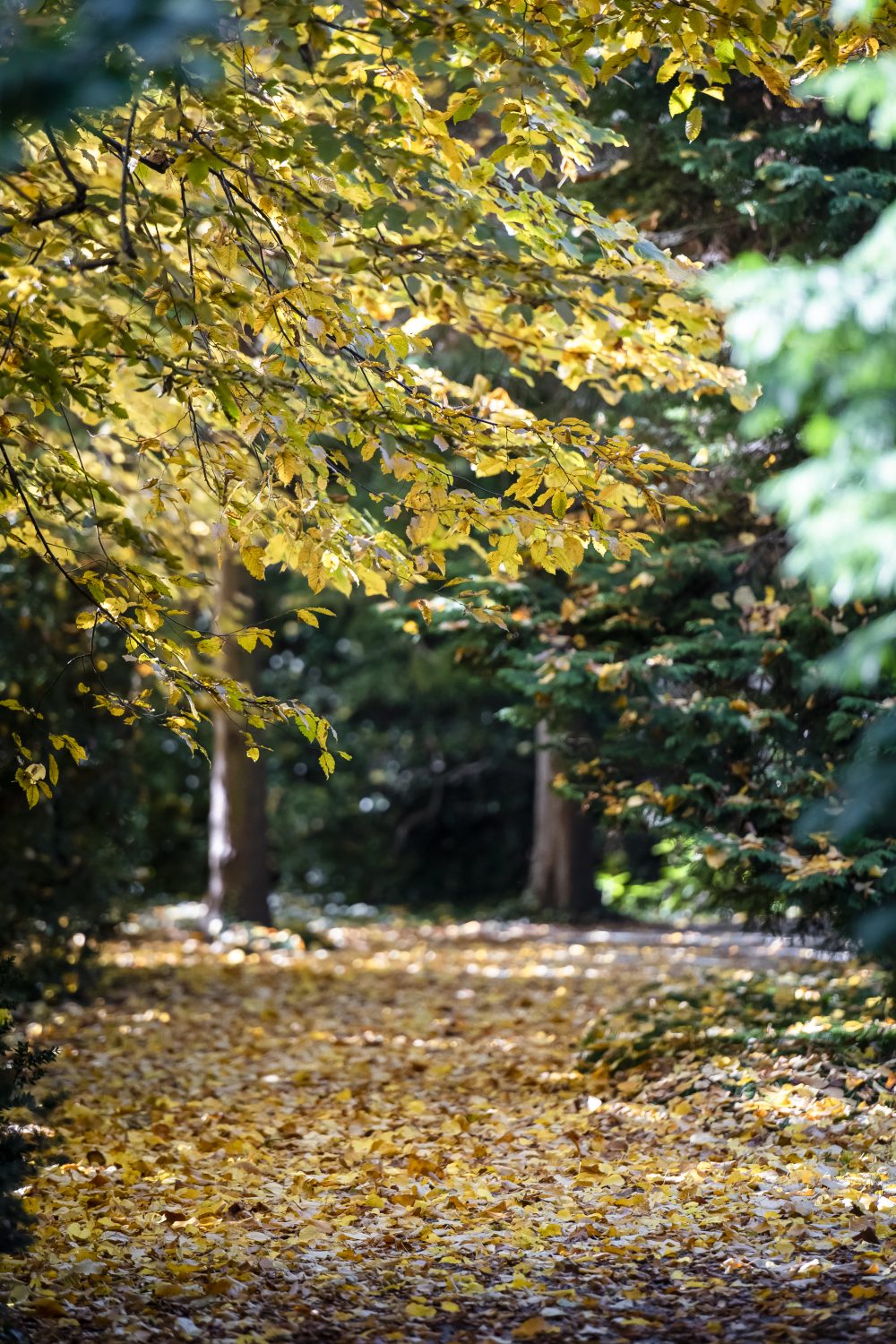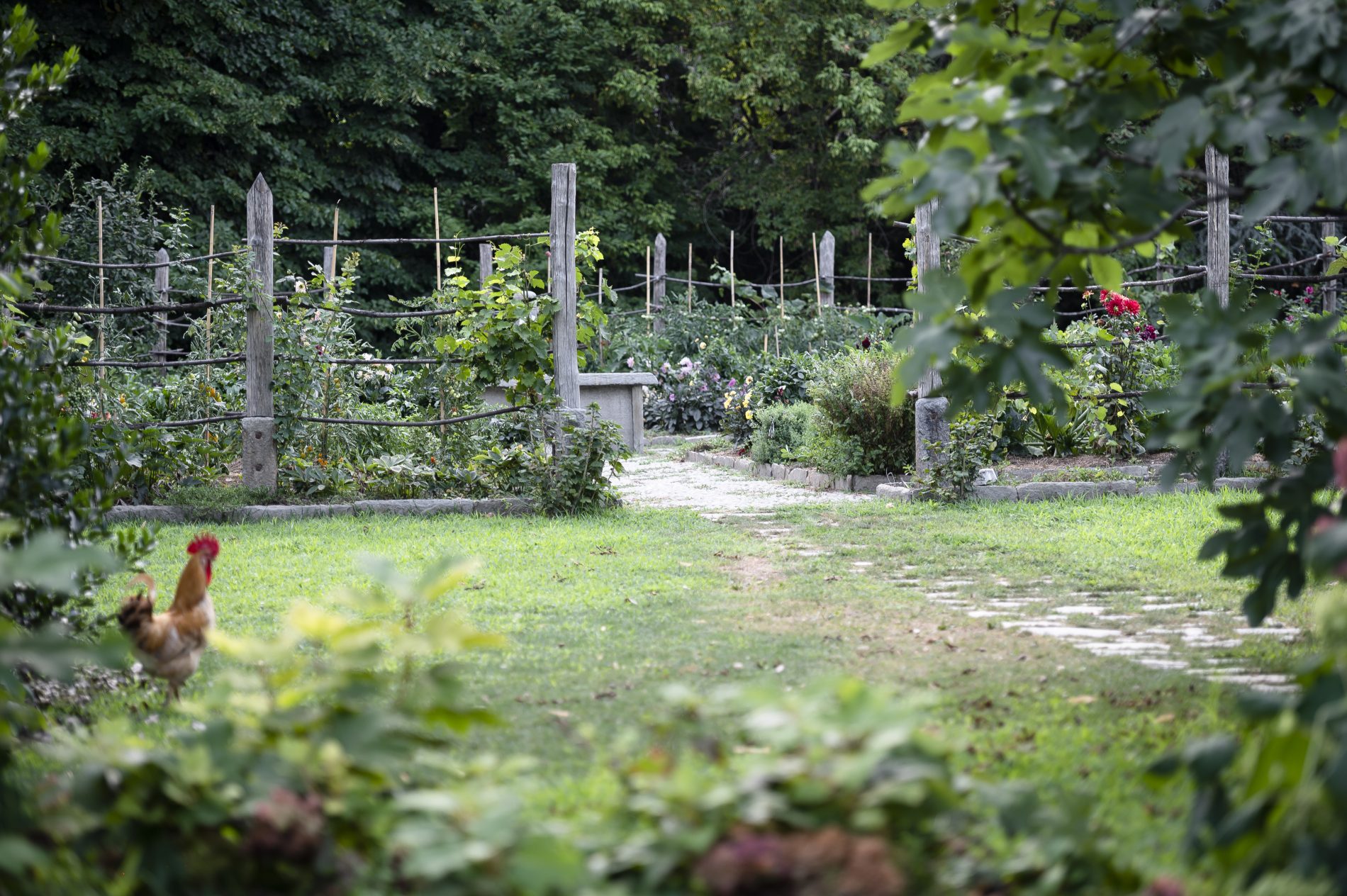The Linden Avenue
The linden trees along this avenue "seem to hide behind one another," their branches cascading like canopies to the ground in enchanting waterfalls.
Linden wood is light in colour, lightweight yet sturdy. Its wide leaves, shaped like charming hearts, may have inspired romantic, nostalgic tales where secret meetings between maidens and knights often took place beneath these trees.
Widely planted in parks and courtyards of noble estates, as well as in avenues, squares, and gathering places in towns and cities, the linden was historically the tree under which people danced and celebrated. In the Middle Ages, judicial decisions were made sub tilia, or under the linden, imbuing the tree with an aura of truth and authority.
In June, the intensely fragrant flowers which are yellow or almost white, attract bees. Their nectar contains a sugar called mannose, which intoxicates overly greedy insects, causing them to fall dazed at the tree's base.
Hermann Hesse wrote, “From old trees, through the warm summer evenings, comes a fragrance as sweet as honey”; “inexplicable but familiar to the instincts of bees,” added Boris Pasternak.
This indescribable familiarity with the scent of linden reappears in Marcel Proust’s ‘In Search of Lost Time’. “That taste was that of the little piece of madeleine on Sunday mornings at Combray... that my aunt Léonie offered me after dipping it in her tea or her infusion of lime-blossom.”

The linden trees along this avenue “seem to hide behind one another,” their branches cascading like canopies to the ground in enchanting waterfalls.
Linden wood is light in colour, lightweight yet sturdy. Its wide leaves, shaped like charming hearts, may have inspired romantic, nostalgic tales where secret meetings between maidens and knights often took place beneath these trees.
Widely planted in parks and courtyards of noble estates, as well as in avenues, squares, and gathering places in towns and cities, the linden was historically the tree under which people danced and celebrated. In the Middle Ages, judicial decisions were made sub tilia, or under the linden, imbuing the tree with an aura of truth and authority.
In June, the intensely fragrant flowers which are yellow or almost white, attract bees. Their nectar contains a sugar called mannose, which intoxicates overly greedy insects, causing them to fall dazed at the tree’s base.
Hermann Hesse wrote, “From old trees, through the warm summer evenings, comes a fragrance as sweet as honey”; “inexplicable but familiar to the instincts of bees,” added Boris Pasternak.
This indescribable familiarity with the scent of linden reappears in Marcel Proust’s ‘In Search of Lost Time’. “That taste was that of the little piece of madeleine on Sunday mornings at Combray… that my aunt Léonie offered me after dipping it in her tea or her infusion of lime-blossom.”
Audio

I punti di interesse
Ti trovi qui
